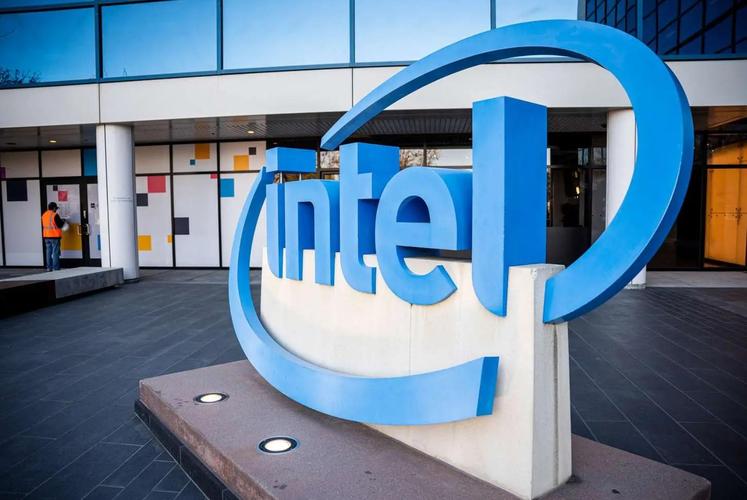
Recently, the global technology industry has been shaken by news that Intel is in preliminary negotiations with Apple on investment matters to promote the transformation of its chip business. This news caused Intel's stock price to soar by 6% in a single day, while Apple's stock price fell slightly by 0.3%. This negotiation not only concerns the fate of the two giants, but also reflects a profound change in the semiconductor industry landscape.
Intel's predicament stems from multiple challenges. In the second quarter of 2024, the company incurred a net loss of 1.61 billion US dollars, with its market value halved to 100 billion US dollars compared to the beginning of the year. The quarterly loss of its OEM business expanded to 2.8 billion US dollars, and the operating profit margin fell to -65.5%. The concentrated outbreak of problems such as the failure of 10nm process development, rigid IDM mode, and lagging AI chip layout. In the AI chip market, Nvidia holds 80% of the market share, while Intel's Gaudi 3 chip has been cut by customers due to insufficient performance; In the CPU market, AMD continues to erode its market share with the Ryzen series; In the field of OEM, the 18A process did not meet expectations in Broadcom testing, with wafer costs three times higher than TSMC, and major customers were lost.
Apple's intervention is actually a strategic reinforcement. Although Apple has achieved self-developed A-series processors and accumulated patents in the baseband chip field through the acquisition of Intel's baseband business, there are still structural risks in its supply chain. In 2025, the US tariff policy towards China resulted in Apple bearing an additional cost of $900 million per quarter, causing its revenue in China to drop to $16 billion. By investing in Intel, Apple can acquire advanced process technologies such as 18A, reduce its dependence on TSMC, and utilize Intel's production capacity layout in the United States to cope with tariff pressures. More importantly, Intel's patent reserves and design capabilities in the fields of PC and data center chips can form technological synergy with Apple.
The deep logic of negotiation lies in the precise matching of the needs of both parties. Intel needs capital and technical cooperation to accelerate its transformation. Although its 18AP low order process performance is not as good as TSMC's 3nm, it has cost advantages in edge computing and AI reasoning scenarios. Apple sees the potential value of Intel's OEM business - if Intel can win 2-3 heavyweight customers, its OEM business valuation will significantly increase. But the risks are equally significant: Intel's 14A process yield is only 35%, less than half of TSMC's; Apple has never successfully integrated large chip companies in its history. Although the baseband business it acquired previously had 2200 employees and 17000 patents, its 5G baseband research and development still lags behind Qualcomm by two generations.
There are serious differences in the market regarding this. JPMorgan Chase believes that Intel's OEM business requires "customer-centric innovation," and its bureaucratic system is difficult to support; UBS analysts pointed out that if the cooperation is successful, Intel can use Apple orders to verify the 18A process and attract other customers. On a technical level, Intel's layout in photon computing and quantum computing may have synergies with Apple's AI strategy, but the software ecosystem gap is difficult to bridge in the short term.
The ultimate significance of this negotiation goes far beyond commercial cooperation. Against the backdrop of a surge in demand for AI chips and intensified geopolitical competition, it heralds the restructuring of the semiconductor industry chain - evolving from vertical integration to specialized division of labor, and transitioning from a single technology route to the coexistence of multiple technologies. For Intel, this is the last chance to avoid becoming the 'second IBM'; For Apple, this is a crucial step in breaking through supply chain bottlenecks and consolidating the hardware ecosystem. Regardless of the outcome, this game will profoundly affect the power structure of the global technology industry in the next decade.
Will the combination of Intel's OEM business and Apple's design capabilities give rise to a new chip giant? Will the rise of domestic chip production capacity in the United States rewrite the global supply chain map? The answer is hidden in the details of the negotiation table, and even more so in the wave of technological iteration. This game has no end, only eternal evolution.

Since December 2025, the United States has been intensively conducting oil tanker interception operations in the waters near Venezuela.
Since December 2025, the United States has been intensively…
When U.S. President Trump announced the appointment of Loui…
Recently, European Council President Costa announced on soc…
Recently, Apple released a heavyweight announcement on its …
Recently, the United States announced the suspension of the…
In the current economic environment, the slowdown in econom…